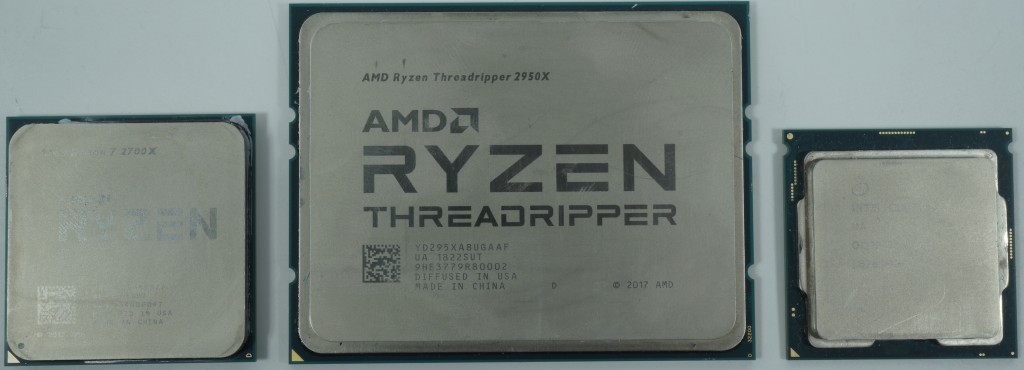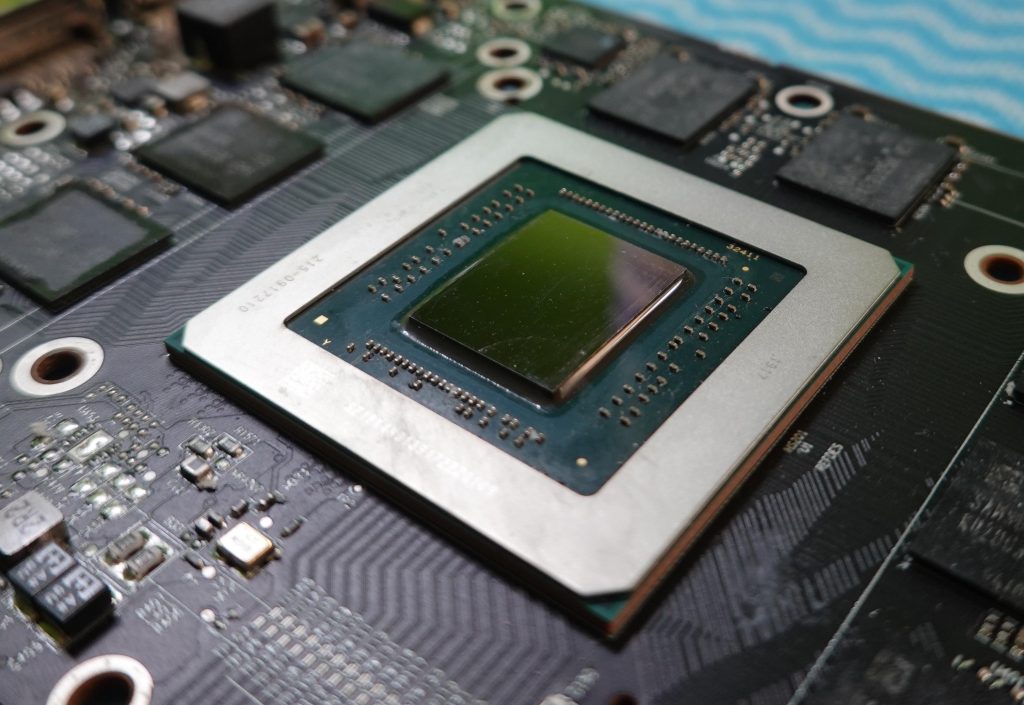Calculation explained simply – 4 factors are important
Once again I remember page one and the thermal conductivity in watts per metre Celsius or watts per metre Kelvin. Let’s simply agree on W/m*K, whereby the star could also be omitted. Since it is so clearer, I simply leave it standing. But what the hell is the unit meter doing here now? We need the unit meters for the ratio of the thickness (of the heat conducting paste layer) in meters (m) to the area (of the heat conducting paste layer) in square meters (m²). If you now calculate m/m², then logically 1/m remains and we have our desired meter (m) for the ratio. It’s not that difficult.
Our formula needs now four data, which we know or must determine:
| Thermal Conductivity („K”) | This value W/m*K or W/mK can almost be found in the manufacturer’s specifications |
| Application field of the thermal compound | Area of the CPU heatspreader or GPU in m² |
| Thickness of the thermal compound | Layer thickness (depending on skills and paste) between 0.02 and 0.05 mm (0.00002 to 0.0005 m) |
| Maximum power dissipation of the CPU in Watt | Here you stress the CPU and determine the so called Package Power / GPU Power |
Here I have four (somewhat rounded) dimensions and areas for you, with which it can be calculated. If you use other CPUs or GPUs, you can simply use your values:

| AMD Sockel AM4 | AMD Sockel TR4 | Intel Sockel 1151 | RX 5700 XT |
| 37.5 mm x 37. 5 mm | 68 mm x 51 mm | 29.5 mm x 29.2 mm | GPU Die |
| = 0.00140625 m² | = 0.003468 m² | = 0.0008614 m² | = 0.000251 m² |
Here is the formula for you:
Rpaste = (Dicke / Fläche) * (1 / thermal conductivity)
Example 1 – Ryzen 5 3600X
Make for better understanding now the sample calculation. Kevin-Justin has rather bad skills, but this is not the first time he has done this with thermal grease. He is also smart enough to buy the expensive “noble paste” with 12.5 W/m*K, so that at the end of the day he gets an average layer thickness of 0.00004 m with the help of the very liquid paste. He also buys a Ryzen 5 3600X with a heatspreader area of 0.00140625 m². Now we can easily calculate the temperature drop in Kelvin or °C:
Rpaste = (0.00004 m / 0.00140625 m²) * (1 / 12.5 W/m*K) = 0.002275 K/W
If his Ryzen 5 3600X now gives off a maximum of 95 watts of waste heat, the temperature drop is logically 0.002275 K/W * 95 W, i.e. 0.216 Kelvin or degrees Celsius at the end! However, if he was stingy now, and only takes the ultra cheap paste with 4 W/m*K, which is also a bit more viscous and he has to get by with an (acceptable) layer thickness of 0.0001 m, but the CPU is still the same, then it looks something like this:
Rpaste = (0.0001 m / 0.00140625 m²) * (1 / 4 W/m*K) = 0.0178 K/W
Since we are still cancering around at 95 watts, Kevin-Justin must now expect a temperature drop of 1.7 Kelvin (or °C). That’s just 1.5 Kelvin more! If you overclock now and beat up the CPU to 150 watts, then it’s 0.34 Kelvin with the noble paste and 2.67 Kelvin with the cheap paste. The difference is already about 2.3 Kelvin.
Example 2 – Core i9-9900K
His girlfriend Chantal-Cheyenne prefers to buy an Intel processor for her great Z390 board and immediately clocks up until the uncle doctor arrives. So let’s expect 150 watts right away, although that’s also more for the gallery. If you prefer to live with 95 watts, just do the math yourself now. Let’s test noble paste against cheap paste again:
Rpaste = (0.00004 m / 0.0008614 m²) * (1 / 12.5 W/m*K) = 0.00371 K/W
Rpaste = (0.0001 m / 0.0008614 m²) * (1 / 4 W/m*K) = 0.029 K/W
At 150 watts there would be 0.557 Kelvin and 4.35 Kelvin, so at least a difference of about 3.8 Kelvin. But that’s all.
Example 3 – VGA card Radeon RX 5700 XT
The comparatively high thermal density is already a challenge and therefore graphic cards are subject to their own laws because of the comparatively small area compared to the CPU with almost always clearly higher loss performance. For example, if you take the 7 nm chip of a Radeon RX 5700 XT and calculate an average layer thickness of 0.00004 m, the following calculation results for the noble paste
Rpaste = (0.00004 m / 0.000251 m²) * (1 / 12.5 W/m*K) = 0.0127 K/W
If you now overclock extremely and calculate with a maximum power dissipation of 300 watts, then that’s already 3.81 Kelvin with the good paste. And now we ask ourselves what happens with the cheap paste if we manage to get an equally thin layer. We calculate again, but this time with 4 W/m*K:
Rpaste = (0.00004 m / 0.000251 m²) * (1 / 4 W/m*K) = 0.o398 K/W
Now it’s already 11.94 Kelvin and we also understand why I don’t recommend cheaper pastes on graphics cards, even if they are so fluid and “reliable”. That’s over 8 Kelvin difference between cheap discount goods and lobster paste from the delicatessen store. But it goes even better, because there are even conventional products with 16 W/m*K as imprint. But is the surcharge worth it?
Rpaste = (0.00004 m / 0.000251 m²) * (1 / 16 W/m*K) = 0.00996 K/W
With 2.99 Kelvin one lies with the other noble substance now still 0.9 Kelvin over the noble paste. When comparing prices, however, you have to be careful, as many suppliers deliberately use their own bottling sizes to make direct price comparisons more difficult.
A lot harms a lot
So we see that too much paste results in too thick a layer and thus also causes too high a temperature drop. And that with the highest possible contact pressure is also such an urban legend. You really only need so much pressure that the cooler is tight and not loose. Of course, the paste has to be pressed so far that it closes the gaps air-free and also produces the thinnest possible layer. The thin-through-screw fraction replaces missing skills with torque and presses the noble paste sideways until it doesn’t get thinner or the motherboard crashes. If you do less paste on it, you won’t have these problems.

Summary and conclusion
In the end we see that the difference between the pastes, especially with the CPUs, is not due to the great number on the packaging, but to a thicker layer. This is precisely why many people still swear by the Arctic MX-2 and MX-4 today, because the performance of the Arctic MX-2 and MX-4 is not outstanding, but it is so smooth that you can still get the thinnest layers. Diamond paste has to be heated up and applied, the MX gear works always and everywhere. Well, almost, because it fails a little bit with current graphics cards in the fight for the last Kelvin.
Of course many other factors play a role and the temperature drop calculated here is only a small facet of the cooling failure or the performance crown. But the calculation shows that the whole thermal compound hype drifts more towards gold cables and snake oil than that it really has technical reasons. If you take a look at our heat conduction paste charts, you will also see that the differences remain manageable even in the real measurement setup and that you really have to ask yourself why you should sink the equivalent of a lunch in heat conduction paste.
The really good (and thus very high-priced) products only pay off with a small surface area and at the same time very high power losses, i.e. with very high thermal density. Then it can depend on each W/m’K, in order to keep the delta e.g. between water block and Die as small as possible. With a CPU, on the other hand, this thermal density is many times lower. And if you take a look at the Threadripper, you will almost be satisfied with toothpaste.
With CPUs you should not reach into the old and cheap shelf due to other factors, such as bleeding (silicone leakage and brittleness in old age), because heat-conducting paste also has an expiration date and you end up with more than you save. Only for the real high-end of the pastes you have to drive up power losses from 200 watts (and more) in order to experience a real added value. Then perhaps a tube of metallic Goldinaut Liquid can also be used. The 65-watt fraction, however, is guaranteed to fail because of its own skills if temperatures don’t work out, but not because of the cheaper thermal grease.































Kommentieren